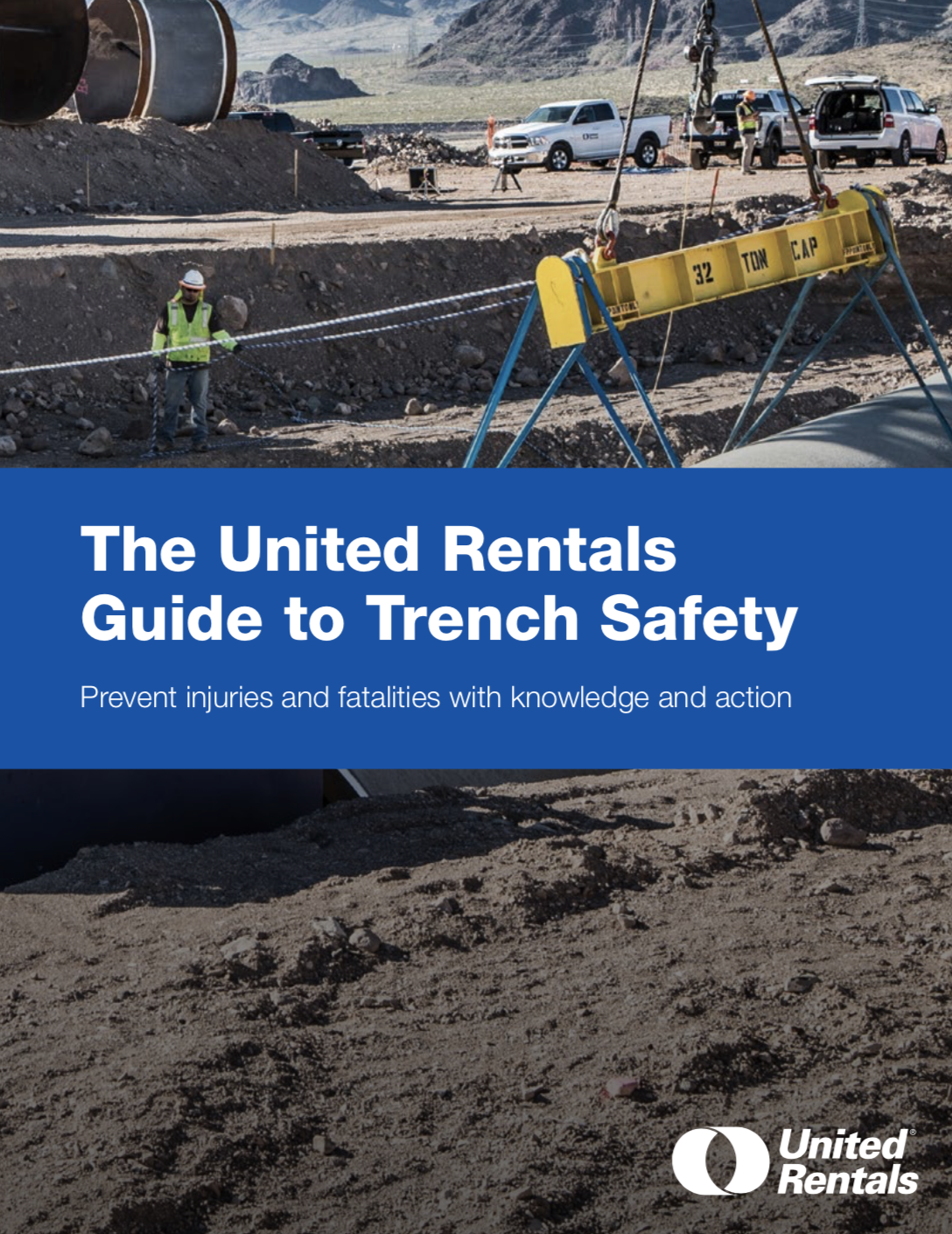Any worker operating in a trench should have a clear understanding about the hazards involved in their work.
Any worker operating in a trench should have a clear understanding about the hazards involved in their work; among them, the potential for a cave-in stands out as one of the most frightening. Fortunately, OSHA requires the use of several preventative measures for protecting workers from a cave-in. The type of soil, the water content in the soil, the weather and climate, the depth of the cut, and other events external to the trench may affect which protective processes need to be implemented for maximum worker safety. OHSA standards for trenching and excavation safety include methods for sloping, shoring, and shielding, as well as steps for installing and removing protective support systems.
In addition to protecting excavation workers against a structural collapse, the same OSHA standards address fall protection. During excavation work, construction activities around the trench may distract workers, setting the stage for potential fall hazards. OSHA standards specify that guardrails, fences, and barricades must be in place at the edge of excavations six feet or more in depth, especially when plant growth or other visual barriers conceal the trench.
Guardrails and Plates
Employers can't assume that every employee working at an excavation site understands the potential for fall hazards. A fall protection system for trenches consists of fall protection posts that attach securely to the top of a rail panel or trench shield. Four-to-six-foot-wide rails can support a 300 to 500 load across any part of the fall protection system. Trench plates also provide safe surface crossing over trenches for foot traffic and vehicles.
Sheeting
Spaced sheeting — or spot shoring — places spaced timber shores, bracing, trench jacks, or other materials around the boundary of a proposed excavation. Horizontal planks extend between the vertical materials to support the sheeting, and close sheeting places a wall of continuous solid plates along the entire length of the trench.
Slide Rails
Smaller excavation sites may utilize a slide rail, consisting of steel panels and vertical steel posts. The use of a lighter component shoring system rather than a full trench shield allows for the entrance of excavation equipment. Slide rails install during excavation, and panels slide into integrated rails on the vertical posts.
Shoring Systems
A shoring system prevents the movement of soil, underground utilities, roadways, or foundations, which is very important. Made of posts, wales, struts, and sheeting, shoring or shielding provides protection if the location or depth of the trench cut doesn't allow sloping back to the maximum allowable angle. Shoring systems install from the top down, and removal occurs from the bottom up; the system can adapt easily to various trench depths and widths.
Although traditional shoring systems relied on timbers, hydraulic shoring systems consisting of prefabricated aluminum or steel have become a more popular option. Because of the lightweight materials involved in shoring, one worker can easily install the entire system. Pressure gauges located throughout the system ensure the equal distribution of hydraulic pressure along the trench line.
Pneumatic shoring systems work on the same principle as hydraulic systems, but require the use of an on-site air compressor. After compressed air expands the trench jacks into place, pins lock the jacks to achieve desired stability. Although hydraulic shoring systems remain popular, pneumatic shoring systems offer the advantage of clean support without the use of liquids.
Trench Shields
OSHA standards allow the use of pre-fabricated shields or portable trench boxes instead of fixed shoring systems if the shields provide an equivalent or greater level of protection; these shields must resist bulging, heaving, and vibration. OSHA standards also require the regular inspection and maintenance of these shields by a trained employee. To ensure stability, the excavated area between the outside of the box and the face of the trench should remain as small as possible.
Because of the potential for hazards as well as the complexity of excavation work, some trench operations may even combine shielding with sloping to provide additional protection. While some trench shields consist of steel plates welded to a heavy steel frame, others use aluminum or fiberglass sheeting. Workers should operate only within the protection of the shield, and in the event of a slide, workers must stay within the shield to be protected.
Download the United Rentals Guide to Trench Safety




